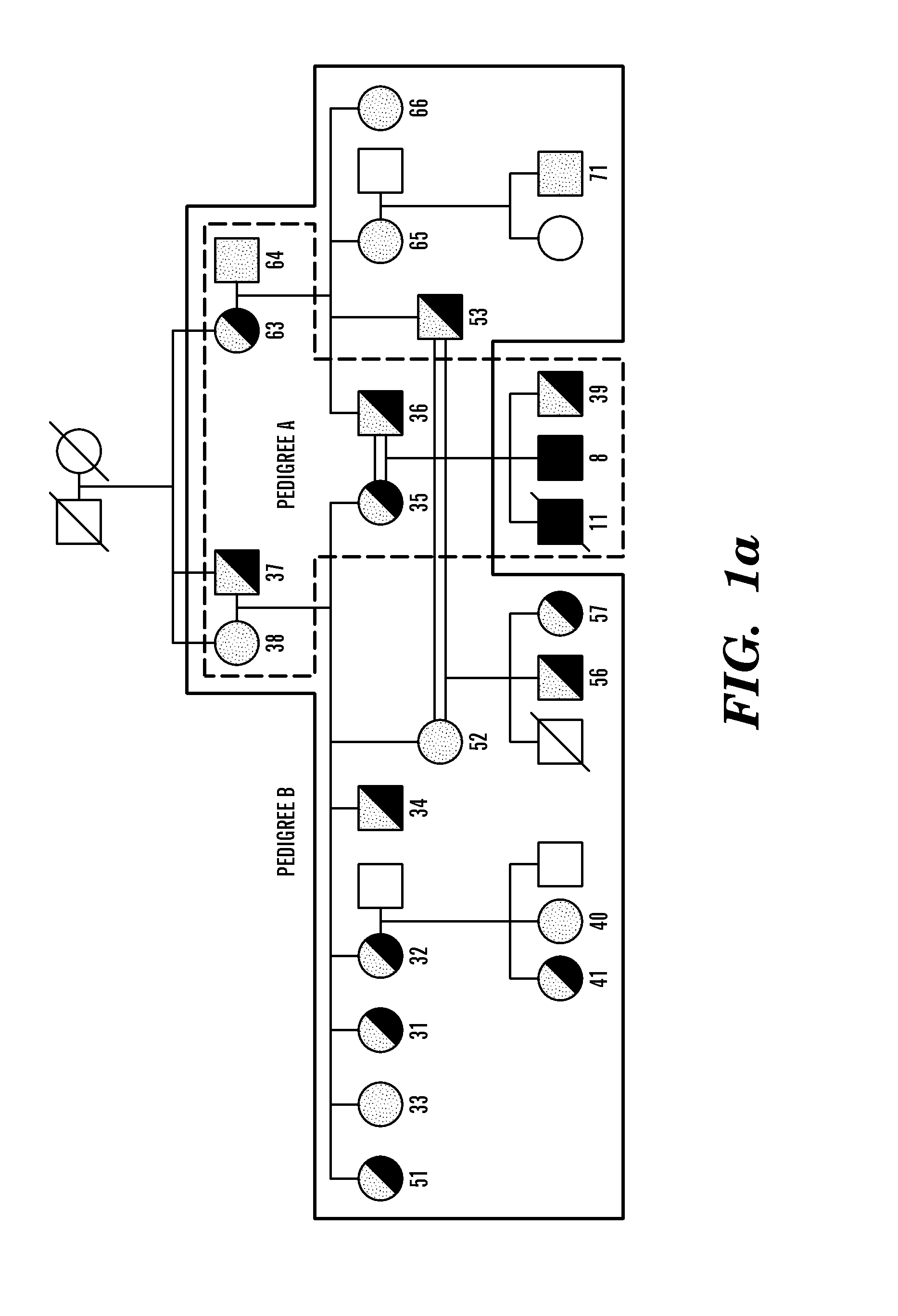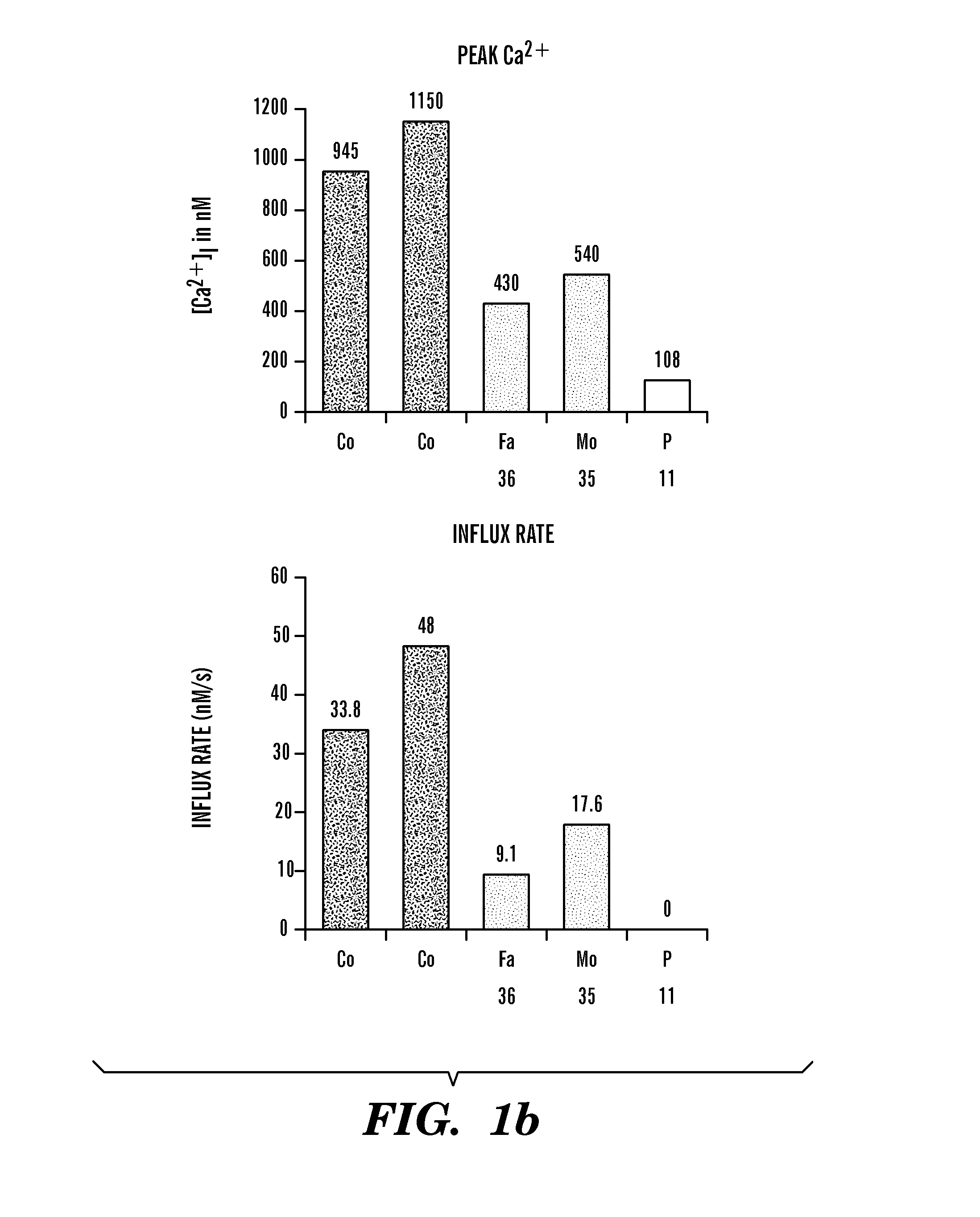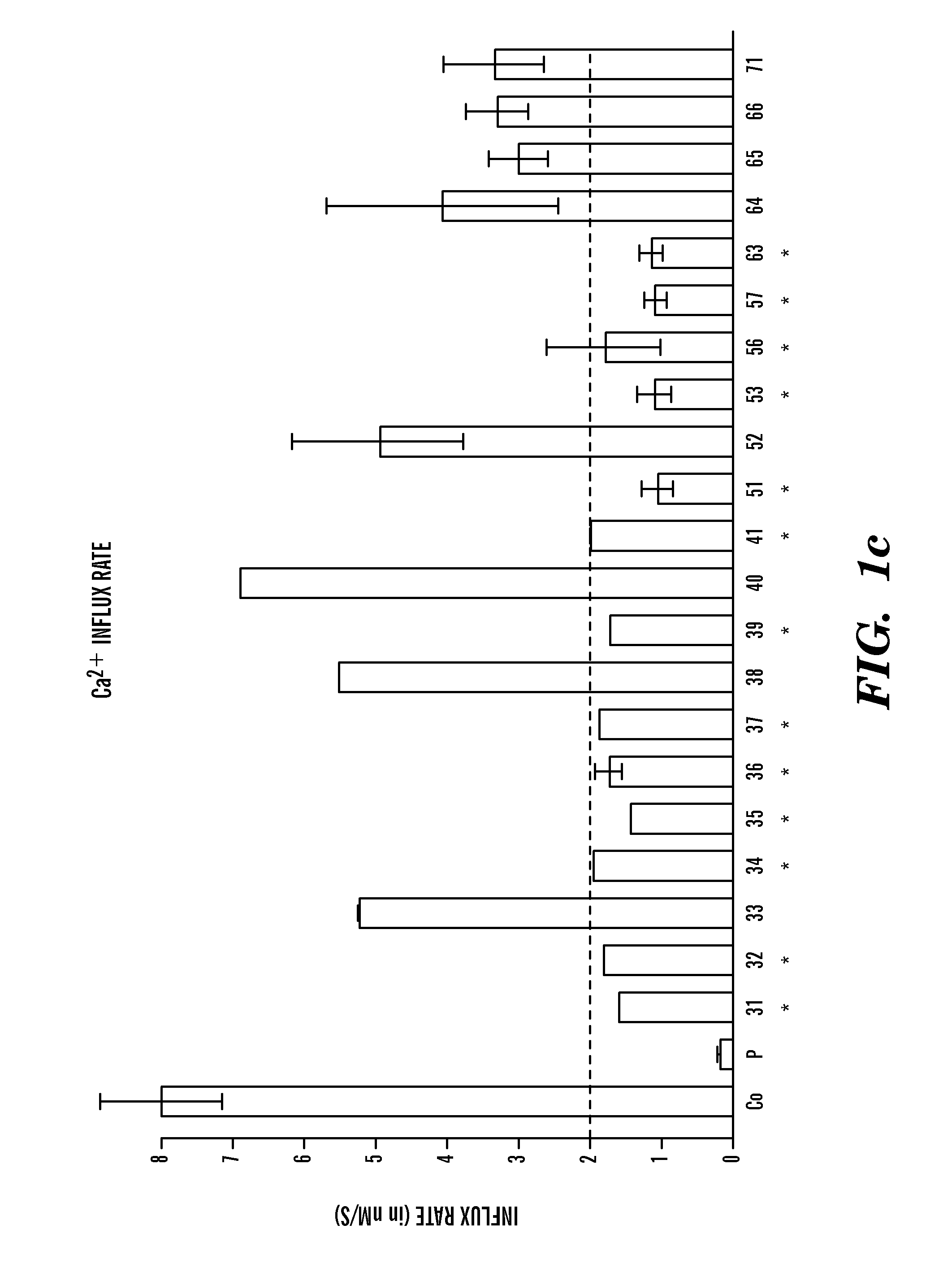Regulators of nfat
a transcription factor and gene regulation technology, applied in the field of nfat regulation, can solve the problems of serious and widespread medical problems such as the immune system's inappropriate activity, drug use, and long-term use of nephrotoxic and neurotoxic effects, and nfat may contribute to the observed toxicity
- Summary
- Abstract
- Description
- Claims
- Application Information
AI Technical Summary
Benefits of technology
Problems solved by technology
Method used
Image
Examples
example 1
Identification of Ca2+ Release Activated Ca2+ (CRAC) Channel Gene, ORAI1, in SCID Patients
Materials and Methods:
Case Reports
[0151]Detailed case reports of the two SCID patients investigated in this study have been described (Feske 1996, 2000).
Cell Lines and Reagents
[0152]T cell lines were established from peripheral blood lymphocytes of two patients and 21 family members and grown as described48. Foreskin fibroblasts from the newborn SCID patient 2 and a healthy newborn (Hs27 cell line, ATCC, Manassas, Va.) were immortalized by retroviral transduction with a telomerase expression plasmid (hTERT, generous gift of S. Lessnick, DFCI, Boston, Mass.). The macrophage-hemocyte-like Drosophila cell line S2R+ was grown in Schneider's medium with 10% fetal calf serum (Invitrogen) according to standard protocols. Thapsigargin was purchased from LC Biochemicals (Woburn, Mass.), Charybdotoxin (CTX) and 2-aminoethoxydiphenylborate (2-APB) from Sigma (St. Louis, Mo.).
example 2
A Genome-Wide Drosophila RNAi Screen Identifies DYRK as a Novel Regulator of NFAT
Materials and Methods
The Genome-Wide Primary Screen
[0245]Methods were adapted from refs12,13. 104S2R+ cells were added into each well containing 0.25 μg of dsRNAs in 10 μl of serum-free medium and incubated for 1 h at 26° C. The cells were then transiently transfected with NFAT1(1-460)-GFP expression plasmid9,17 (10 ng) in Schneider's medium (Invitrogen) (30 μl). After incubation for 48-72 hrs at 26° C., the cells were fixed and stained with DAPI, and the coincident GFP and DAPI images were acquired by an automated camera from three different locations in each well. A total of fifty-eight 384-plates were analysed, containing a total of 21,884 wells into which individual dsRNAs had been arrayed.
[0246]Control wells (no dsRNA, dsRNA against GFP, and dsRNA against a gene (thread-anti-apoptotic) causing cell death) were present on each plate and served as an internal control for knockdown efficiency of each ...
example 3
Table I.
[0315]List of candidates that were positive in the secondary screen, classified into the categories in Table I. The first column indicates whether or not the candidate was retested in the confirmatory screen (NT, not tested); if tested, the summed localization score from 3 separate experiments is shown (see Methods). Other columns list gene names, Flybase numbers, and human orthologues as obtained from Homologene (for the kinase category, the phylogenetic analysis described in Methods was used in addition), and number of predicted off-targets with exact match of 21-nt, 37 candidates with >10 off-targets are not listed.
Table II.
[0316]Analysis of expression, RNAi phenotype in thapsigargin-treated cells, and amplicon off-targets for calcineurin subunits and related proteins. Expression level of the subunits in S2R+ cells was estimated by RT-PCR analysis, and the effect of their depletion on NFAT nuclear localization in thapsigargin (TG)-treated cells was evaluated (+++, strong ...
PUM
| Property | Measurement | Unit |
|---|---|---|
| voltage | aaaaa | aaaaa |
| time | aaaaa | aaaaa |
| temperature | aaaaa | aaaaa |
Abstract
Description
Claims
Application Information
 Login to View More
Login to View More - R&D
- Intellectual Property
- Life Sciences
- Materials
- Tech Scout
- Unparalleled Data Quality
- Higher Quality Content
- 60% Fewer Hallucinations
Browse by: Latest US Patents, China's latest patents, Technical Efficacy Thesaurus, Application Domain, Technology Topic, Popular Technical Reports.
© 2025 PatSnap. All rights reserved.Legal|Privacy policy|Modern Slavery Act Transparency Statement|Sitemap|About US| Contact US: help@patsnap.com



